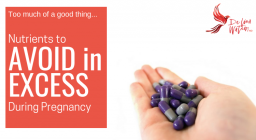
One of the “joys” of womanhood, our monthly menstrual flow, can sometimes come with some surprises. One of those occurrences for many women is menstrual blood clots. Most women want to know if this is normal – and why it is happening.
Your Period
 During your monthly cycle the lining of your uterus (endometrium) grows thick and increases the blood supply to support a potential pregnancy. When a pregnancy does not occur the drop in hormones (especially progesterone) leads to a release of the innermost lining of the uterus and we experience a period. In an average period women lose 30-40ml (6-8 tsp) of blood, with women experiencing heavy periods losing more than 60ml (12 tsp).
During your monthly cycle the lining of your uterus (endometrium) grows thick and increases the blood supply to support a potential pregnancy. When a pregnancy does not occur the drop in hormones (especially progesterone) leads to a release of the innermost lining of the uterus and we experience a period. In an average period women lose 30-40ml (6-8 tsp) of blood, with women experiencing heavy periods losing more than 60ml (12 tsp).
Blood Clots During Your Period
In a typical menstrual flow, the blood is not clotted due to the release of anticoagulants. The contraction of the uterus also stops further bleeding from the remaining blood supply to the uterus, and helps to expel the menstrual blood. After 3 to 4 days of bleeding, most of the inner lining of the endometrium (the “stratum functionalis”) has been released and blood loss slows considerably.
Blood clots are often a consequence of heavy menstrual flow. When the blood loss is too much, or too fast, the anticoagulants produced are not adequate to breakdown the lining of the uterus and prevent further clotting. Most women who experience clotting do so on the heaviest days of their menstrual period.
Possible Underlying Causes of Menstrual Blood Clots
-
Miscarriage
Sometimes clots are actually a very early stage miscarriage. These clots may be found along with small gray clumps of tissue. If you experience other signs or symptoms of pregnancy along with clots, you may consider having your beta HCG levels tested to determine if it was, indeed, an early miscarriage.
-
Uterine Fibroids (Leiomyomas)
Uterine fibroids are benign (non-cancerous) growths that occur in the muscular layer of the uterus. Some women with fibroids experience no symptoms at all, but for many women with fibroids they experience heavy periods (and blood clots) as a result. Fibroids are more likely to occur as we get older, especially after having children. Fibroids are also more common in women of African descent, those who are overweight and those with a family history of fibroids.
Adenomyosis occurs when the endometrium breaks through into the muscular layer of the uterus (the myometrium). This can cause cramping, bloating, heavier menstrual periods and the presence of blood clots. Adenomyosis is also more common with age, in women who have had children, and in those who have had uterine surgery (such as a Caesarean section).
-
Iron deficiency
In one of the great injustices in women’s health one major consequence of heavy periods, iron deficiency, can also lead to heavy periods. If you are experiencing heavy periods it is vitally important to test your hemoglobin, hematocrit and ferritin (iron) levels and build up your iron levels if needed.
-
Hormonal imbalances
Imbalances between the two main female hormones, estrogen and progesterone, can lead to increased thickening of the uterine lining, resulting in heavy menstrual periods and blood clots. Imbalances in these hormones can occur at any stage of the reproductive life span, but are most common during adolescence and through the 40s and perimenopausal years.
-
Thyroid imbalances
The thyroid is a small, butterfly shaped gland in your neck that controls your metabolic rate and has significant impacts on your hormonal health. An underactive thyroid can cause many symptoms – fatigue, difficulty losing weight, hair loss, and heavy periods. And with these heavy periods may come menstrual blood clots.
Recommended Testing for Menstrual Clots
If you regularly experience blood clots during your period, having some laboratory and imaging studies done is a good idea. It can help you understand why you are experiencing blood clots and your Naturopathic or Medical Doctor can work with you to determine an appropriate treatment plan.
Complete blood cell count – including hemoglobin and hematocrit to look for healthy red blood cells
Ferritin – to assess for iron deficiency anemia
TSH and complete thyroid panel – to assess health of the thyroid
 Female hormone panel – to compare levels of estrogen and progesterone, along with other reproductive hormones, to ensure balance
Female hormone panel – to compare levels of estrogen and progesterone, along with other reproductive hormones, to ensure balance
Transvaginal or pelvic ultrasound – to identify uterine fibroids or other abnormalities of the uterus and uterine lining
MRI – a further visual assessment of the uterus if ultrasound is not adequate
If you are experiencing heavy periods and menstrual clotting, speaking to your Medical or Naturopathic Doctor can help you understand why you are experiencing these symptoms and develop a treatment that is as unique to your body and your period.
Disclaimer
The advice provided in this article is for informational purposes only. It is meant to augment and not replace consultation with a licensed health care provider. Consultation with a Naturopathic Doctor or other primary care provider is recommended for anyone suffering from a health problem.
References:
Young, B. Wheater’s Functional Histology, 6th Edition, 2014.
Melmed, S. Williams Textbook of Endocrinology, 2016.

















